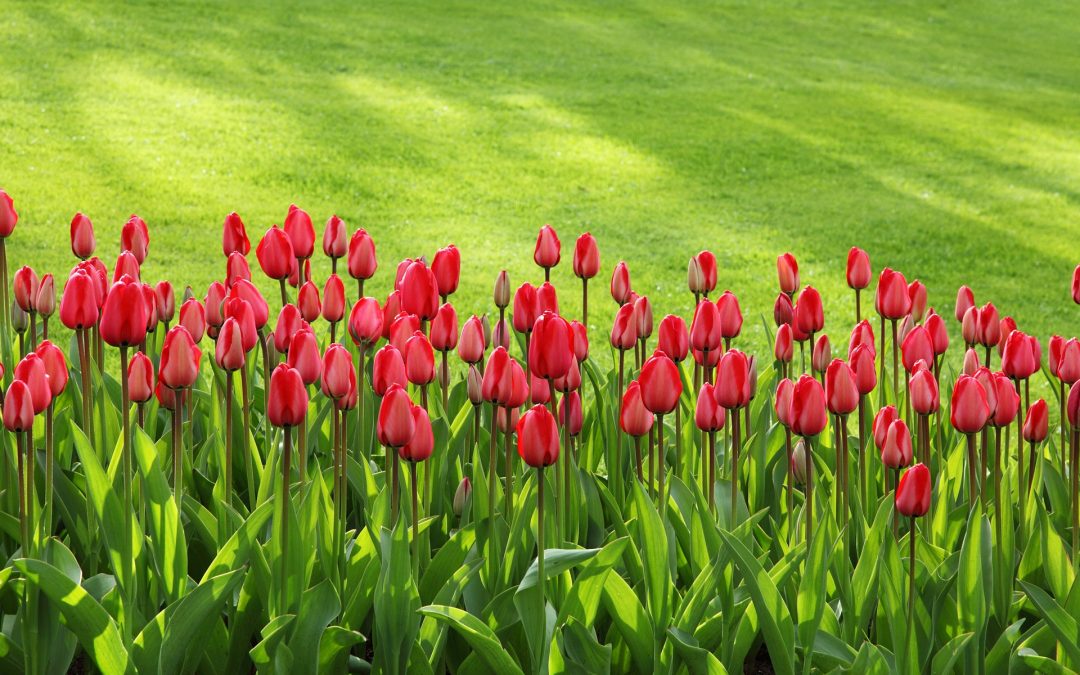The weather is warming up and soon our landscapes will be in full bloom. Good’s has compiled the most frequently asked spring landscaping questions to help keep your landscape looking great this spring.
Do I need to water my lawn in the early spring?
The short answer is YES! Just because your yard has not woken up from its long winter nap, doesn’t mean it can be ignored. But, there is no need to activate your irrigation system if it could still be susceptible to damage from below freezing temperatures. Instead, provide a short five or ten-minute watering with a sprinkling nozzle attached to your hose. Just remember to disconnect your hose from the house to prevent future freeze damage. Provide extra watering to the south and west facing areas of your lawn and around evergreen trees and shrubs. Turf mites are one of the most damaging lawn pests. Watering over the winter and in early spring will help mitigate turf mite damage, help keep lawn roots healthy, and provide much-needed moisture to the evergreens.
When do I take the mulch off my perennials in spring?
If the mulch that you applied in fall consists of a coarse material, such as large, unshredded leaves, or if the mulch that you are using tends to mat down over time and form a barrier, then you should generally be removing that layer of mulch as soon as the threat of severe cold has passed. While perennials sometimes will successfully break through a barrier of mulch, other times damage will result. Even if a covering of mulch does not completely smother a plant, it can, at the very least, disfigure its leaves.
When is it safe to plant annuals in spring?
Frost dates will determine when it is safe to plant. For annuals, that will be transplanted from pots, it’s safe to plant when the last frost date is past. For seeds that are expected to sprout in two weeks, plant the seeds two weeks prior to the last frost date. The old rule of thumb used to be Memorial Day, but to be on the safe side it is best to check the projected last frost dates in the central Pennsylvania area.
Does my lawn need to be aerated?
Aeration is critical in the spring because root growth tends to accelerate this time of year. Lawns also grow very quickly from during the time of April through June and need oxygen and nutrients which aeration helps with. It is also important to know not to remove the plugs from the lawn after an aeration is completed. Let them dry out in the sun, then mulch them back into the lawn with the lawn mower.
Is snow mold a problem?
We have addressed this question before. Cooler temperatures that prevent snow from melting, create the perfect conditions for snow mold growth. Snow mold damages bentgrass lawns more than bluegrass, ryegrass, or tall fescue lawns. When the snow melts away, just lightly rake the matted areas and they should be fine. After raking, aeration can also help. If you’re unsure of what type of grass you have or if snow mold is causing issues, give us a call.
When should I fertilize?
As soon as the snow is gone, typically in March, is the best time for your first fertilization for the year. Fertilize again in early to mid-May. If your lawn is a “cool-season” grass, they grow best from April through June. Fertilizing when the grass is growing quickly provides key nutrients at the right time, thickening the turf and promoting deeper root systems – ideal during hotter, drier months. A thick lawn also helps keep weeds out.
For the most part, as soon as Old Man Winter has eased up, it’s time to hit the ground running. But, every landscape (like every customer) is unique. If you don’t find the information you need here, give us a call and we’ll be glad to help.


